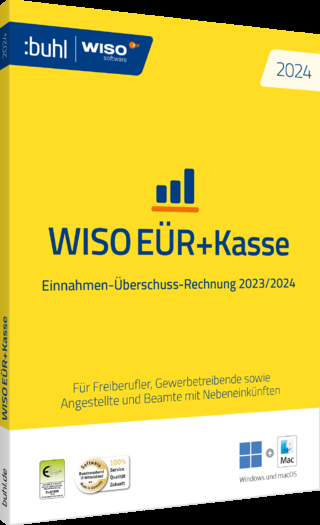
Health Monitoring of Aerospace Structures – Smart Sensor Technologies and Signal Processing
John Wiley & Sons Ltd (Hersteller)
978-0-470-09286-6 (ISBN)
- Keine Verlagsinformationen verfügbar
- Artikel merken
Providing quality research for the reader, this title encompasses all the recent developments in smart sensor technology for health monitoring in aerospace structures, providing a valuable introduction to damage detection techniques. Focussing on engineering applications, all chapters are written by smart structures and materials experts from aerospace manufacturers and research/academic institutions. This key reference:* Discusses the most important aspects related to smart technologies for damage detection; this includes not only monitoring techniques but also aspects related to specifications, design parameters, assessment and qualification routes.* Presents real case studies and applications; this includes in-flight tests; the work presented goes far beyond academic research applications.* Displays a balance between theoretical developments and engineering applications
Wieslaw Staszewski, The Faculty of Mechanical Engineering and Robotics, University of Science and Technology, Poland Wieslaw Staszewski is a Professor at AGH University of Science and Technology in Poland. He has authored circa 280 publications, predominantly in the areas of damage detection and advanced signal processing. He has written and edited a book, authored circa 90 journal papers and is also an editor and associate editor of five journals. He was jointly awarded the "2004 Person of the Year" title by Structural Health Monitoring journal for outstanding contribution in the field of SHM. C. Boller is the editor of Health Monitoring of Aerospace Structures: Smart Sensor Technologies and Signal Processing, published by Wiley. G. R. Tomlinson is the editor of Health Monitoring of Aerospace Structures: Smart Sensor Technologies and Signal Processing, published by Wiley.
List of Contributors. Preface. 1. Introduction (G. Bartelds, J.H. Heida, J. McFeat and C. Boller). 1.1 Health and Usage Monitoring in Aircraft Structures - Why and How? 1.2 Smart Solution in Aircraft Monitoring. 1.3 End-User Requirements. 1.3.1 Damage Detection. 1.3.2 Load History Monitoring. 1.4 Assessment of Monitoring Technologies. 1.5 Background of Technology Qualification Process. 1.6 Technology Qualification. 1.6.1 Philosophy. 1.6.2 Performance and Operating Requirements. 1.6.3 Qualification Evidence - Requirements and Provision. 1.6.4 Risks. 1.7 Flight Vehicle Certification. 1.8 Summary. References. 2. Aircraft Structural Health and Usage Monitoring (C. Boller and W.J. Staszewski). 2.1 Introduction. 2.2 Aircraft Structural Damage. 2.3 Ageing Aircraft Problem. 2.4 LifeCycle Cost of Aerospace Structures. 2.4.1 Background. 2.4.2 Example. 2.5 Aircraft Structural Design. 2.5.1 Background. 2.5.2 Aircraft Design Process. 2.6 Damage Monitoring Systems in Aircraft. 2.6.1 Loads Monitoring. 2.6.2 Fatigue Monitoring. 2.6.3 Load Models. 2.6.4 Disadvantages of Current Loads Monitoring Systems. 2.6.5 Damage Monitoring and Inspections. 2.7 Non-Destructive Testing. 2.7.1 Visual Inspection. 2.7.2 Ultrasonic Inspection. 2.7.3 Eddy Current. 2.7.4 Acoustic Emission. 2.7.5 Radiography, Thermography and Shearography. 2.7.6 Summary. 2.8 Structural Health Monitoring. 2.8.1 Vibration and Modal Analysis. 2.8.2 Impact Damage Detection. 2.9 Emerging Monitoring Techniques and Sensor Technologies. 2.9.1 Smart Structures and Materials. 2.9.2 Damage Detection Techniques. 2.9.3 Sensor Technologies. 2.9.4 Intelligent Signal Processing. 2.10 Conclusions. References. 3. Operational Load Monitoring Using Optical Fibre Sensors (P. Foote, M. Breidne, K. Levin, P. Papadopolous, I. Read, M. Signorazzi, L.K. Nilsson, R. Stubbe and A. Claesson). 3.1 Introduction. 3.2 Fibre Optics. 3.2.1 Optical Fibres. 3.2.2 Optical Fibre Sensors. 3.2.3 Fibre Bragg Grating Sensors. 3.3 Sensor Target Specifications. 3.4 Reliability of Fibre Bragg Grating Sensors. 3.4.1 Fibre Strength Degradation. 3.4.2 Grating Decay. 3.4.3 Summary. 3.5 Fibre Coating Technology. 3.5.1 Polyimide Chemistry and Processing. 3.5.2 Polyimide Adhesion to Silica. 3.5.3 Silane Adhesion Promoters. 3.5.4 Experimental Example. 3.5.5 Summary. 3.6 Example of Surface Mounted Operational Load Monitoring Sensor System. 3.6.1 Sensors. 3.6.2 Optical Signal Processor. 3.6.3 Optical Interconnections. 3.7 Optical Fibre Strain Rosette. 3.8 Example of Embedded Optical Impact Detection System. 3.9 Summary. References. 4. Damage Detection Using Stress and Ultrasonic Waves (W.J. Staszewski, C. Boller, S. Grondel, C. Biemans, E. O'Brien, C. Delebarre and G.R. Tomlinson). 4.1 Introduction. 4.2 Acoustic Emission. 4.2.1 Background. 4.2.2 Transducers. 4.2.3 Signal Processing. 4.2.4 Testing and Calibration. 4.3 Ultrasonics. 4.3.1 Background. 4.3.2 Inspection Modes. 4.3.3 Transducers. 4.3.4 Display Modes. 4.4 Acousto-Ultrasonics. 4.5 Guided Wave Ultrasonics. 4.5.1 Background. 4.5.2 Guided Waves. 4.5.3 Lamb Waves. 4.5.4 Monitoring Strategy. 4.6 Piezoelectric Transducers. 4.6.1 Piezoelectricity and Piezoelectric Materials. 4.6.2 Constitutive Equations. 4.6.3 Properties. 4.7 Passive Damage Detection Examples. 4.7.1 Crack Monitoring Using Acoustic Emission. 4.7.2 Impact Damage Detection in Composite Materials. 4.8 Active Damage Detection Examples. 4.8.1 Crack Monitoring in Metallic Structures Using Broadband Acousto-Ultrasonics. 4.8.2 Impact Damage Detection in Composite Structures Using Lamb Waves. 4.9 Summary. References. 5. Signal Processing for Damage Detection (W.J. Staszewski and K. Worden). 5.1 Introduction. 5.2 Data Pre-Processing. 5.2.1 Signal Smoothing. 5.2.2 Signal Smoothing Filters. 5.3 Signal Features for Damage Identification. 5.3.1 Feature Extraction. 5.3.2 Feature Selection. 5.4 Time-Domain Analysis. 5.5 Spectral Analysis. 5.6 Instantaneous Phase and Frequency. 5.7 Time-Frequency Analysis. 5.8 Wavelet Analysis. 5.8.1 Continuous Wavelet Transform. 5.8.2 Discrete Wavelet Transform. 5.9 Dimensionality Reduction Using Linear and Nonlinear Transformation. 5.9.1 Principal Component Analysis. 5.9.2 Sammon Mapping. 5.10 Data Compression Using Wavelets. 5.11 Wavelet-Based Denoising. 5.12 Pattern Recognition for Damage Identification. 5.13 Artificial Neural Networks. 5.13.1 Parallel Processing Paradigm. 5.13.2 The Artificial Neuron. 5.13.3 Multi-Layer Networks. 5.13.4 Multi-Layer Perceptron Neural Networks and Others. 5.13.5 Applications. 5.14 Impact Detection in Structures Using Pattern Recognition. 5.14.1 Detection of Impact Positions. 5.14.2 Detection of Impact Energy. 5.15 Data Fusion. 5.16 Optimised Sensor Distributions. 5.16.1 Informativeness of Sensors. 5.16.2 Optimal Sensor Location. 5.17 Sensor Validation. 5.18 Conclusions. References. 6. Structural Health Monitoring Evaluation Tests (P.A. Lloyd, R. Pressland, J. McFeat, I. Read, P. Foote, J.P. Dupuis, E. O'Brien, L. Reithler, S. Grondel, C. Delebarre, K. Levin, C. Boller, C. Biemans and W.J. Staszewski). 6.1 Introduction. 6.2 Large-Scale Metallic Evaluator. 6.2.1 Lamb Wave Results from Riveted Metallic Specimens. 6.2.2 Acoustic Emission Results from a Full-Scale Fatigue Test. 6.3 Large-Scale Composite Evaluator. 6.3.1 Test Article. 6.3.2 Sensor and Specimen Integration. 6.3.3 Impact Tests. 6.3.4 Damage Detection Results - Distributed Optical Fibre Sensors. 6.3.5 Damage Detection Results - Bragg Grating Sensors. 6.3.6 Lamb Wave Damage Detection System. 6.4 Flight Tests. 6.4.1 Flying Test-Bed. 6.4.2 Acoustic Emission Optical Damage Detection System. 6.4.3 Bragg Grating Optical Load Measurement System. 6.4.4 Fibre Optic Load Measurement Rosette System. 6.5 Summary. References. Index.
| Erscheint lt. Verlag | 10.2.2004 |
|---|---|
| Verlagsort | Chichester |
| Sprache | englisch |
| Maße | 178 x 251 mm |
| Gewicht | 652 g |
| Themenwelt | Mathematik / Informatik ► Informatik |
| Technik ► Fahrzeugbau / Schiffbau | |
| Technik ► Luft- / Raumfahrttechnik | |
| Wirtschaft | |
| ISBN-10 | 0-470-09286-6 / 0470092866 |
| ISBN-13 | 978-0-470-09286-6 / 9780470092866 |
| Zustand | Neuware |
| Haben Sie eine Frage zum Produkt? |
aus dem Bereich


